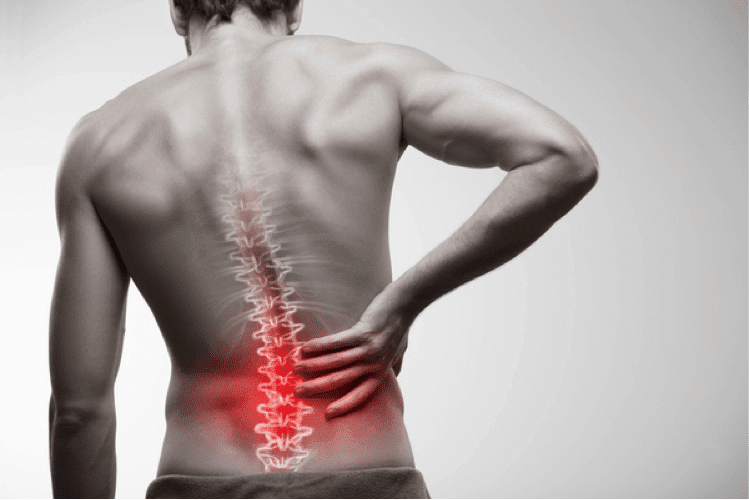
The Influence of Gravity on Low Back Pain
The Importance of Unloading the Anti-Gravity Function of the Lumbar Spine
Research Article Here
As humans, we tend to walk in a forward direction. You don’t see too many people walking backwards or side shuffling down the street, do you? This constant forward motion may have implications on our approach to treating lower back pain, and it all comes back to how an individual is managing gravity and the subtle forward fall that exists during gait, because walking is essentially a series of falling forward and catching yourself each time, right? Our brain is inherently predictive, and it’s these predictive mechanisms that ultimately help us move well in the real world. During that moment when I’m falling forward, the brain picks up the signal from your vestibular system that you are falling towards the ground, and as a result, a reflexive increase in tone is generated to decelerate that motion. Based on your knowledge of anatomy, you can probably guess which peripheral tissues will express that increase in tone to keep you upright – the spinal extensors (anti-gravity muscles). Of course, our lower limbs will ultimately help out in regaining our balance through the initial contact of the forward limb, but those vestibular reflexes are the fastest reflexes to generate a response. But how does this influence back pain?
What we tend to see clinically, is that many individuals with lower back pain lose the ability to allow for their lumbar erectors to ROUND and RELAX, as well as displaying a lack of coordinative coupling with the lumbar spine, the associated spinal extensors, and the lower limbs. Those erectors are loaded with mechanoreceptors, and so it’s important that we facilitate movement there to give the nervous system a clear representation of what’s happening there, because that’s the only way we feed it. We need to allow tissues to move to feed sensory input to the nervous system. Perhaps, with past injuries, poor movement habits, and many other potential reasons, their lumbar spinal erectors express very high tone in an effort to decelerate the movement of our body forward during gait. Of course, we know that this is something that is important to stop us from falling, but the lower limbs need to also aid in this deceleration to allow for a SHARING of the load.
Sharing the forces that act on our body from the ground, as well as our internal responses to those forces needs to be dissipated across multiple tissues to movement efficiency. Not only do they need to be dissipated across multiple tissues, but we need quality top-down control to continuously alter the tone expressed in the body. There are of course, many potential reasons for lower back pain, but we find clinically that when we can allow the lumbar spine and lower limbs to cooperate in a way that encourages coordinative variability, we can help to redistribute forces over a greater surface area. This is a very BOTTOM-UP way of looking at things, but we need to allow for these qualities throughout the rehab process before progressing towards more TOP-DOWN approaches. A blend between the two, as well as understanding the psycho-social influences on an individual’s pain experience can certainly help us facilitate good clinical outcomes.
From the attached article, researchers found that allowing your back to round when we pick things up doesn’t increase the risk for the development of lower back pain, and that those who actually had low back pain ROUNDED LESS! Of course, this doesn’t mean we should lift hundreds of pounds with a rounded back straight away, but the key message is that we shouldn’t continue to demonize lumbar flexion. It’s a movement that has to occur for efficient and robust movement, and for a sharing of loads and forces through the body.
Assessment Tip:
One of MANY ways we can identify if an individual has the ability to unload the lumbar extensors, is to shift our focus during a seated assessment. While seated on the edge of a treatment table or chair, are they able to obtain a reversal of the lumbar lordotic curve (or at least partial)? Do they seem cautious in their attempt to slump in this position? If you see that they are having difficulty, it doesn’t mean we need to drive lumbar flexion and posterior pelvic tilting straight away, but we need to understand the potential reason WHY underlying their difficulty relaxing. Perhaps they were always told it was not ideal? Perhaps there was a past injury or pain experience there and there’s still a subconscious protective strategy present. Well, based on the attached article, we can see that it’s important to allow for these tissues to experience some range and feed that stimulus back to the nervous system to allow for better control. Ultimately, we want each individual to experience movement in both ends of the spectrum (one position is not better than another), so they can establish coordinative variability.
